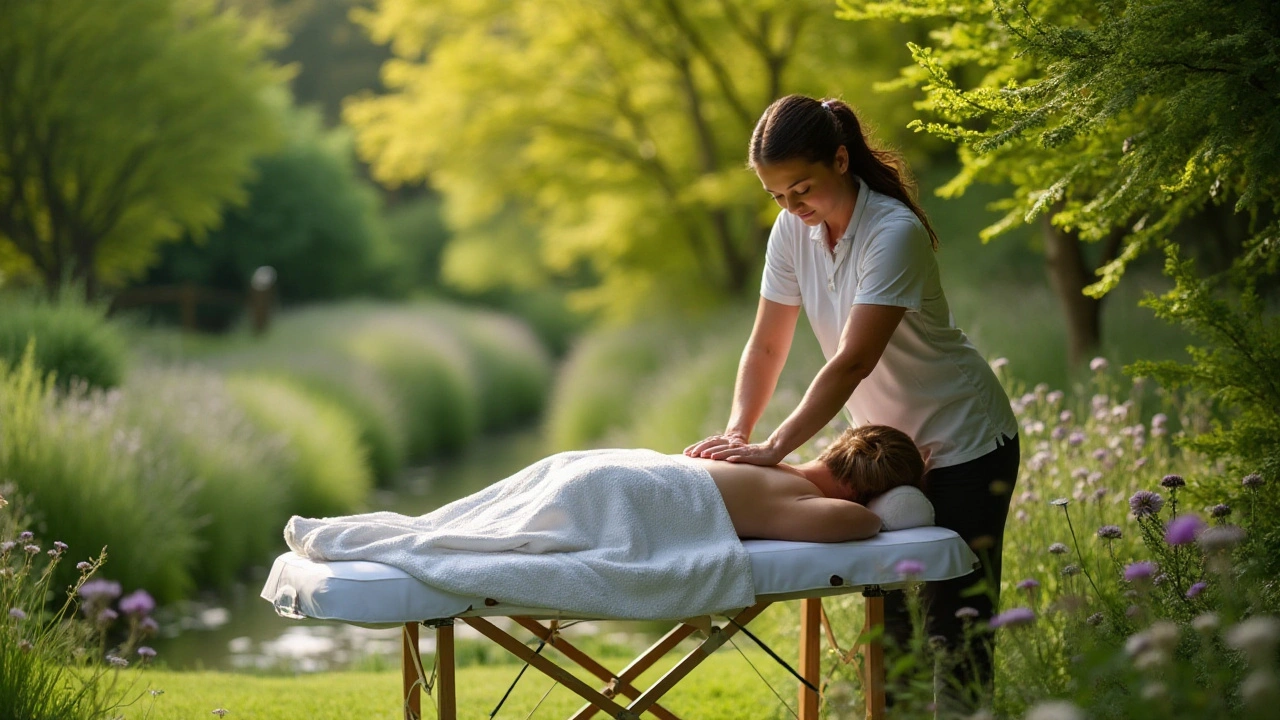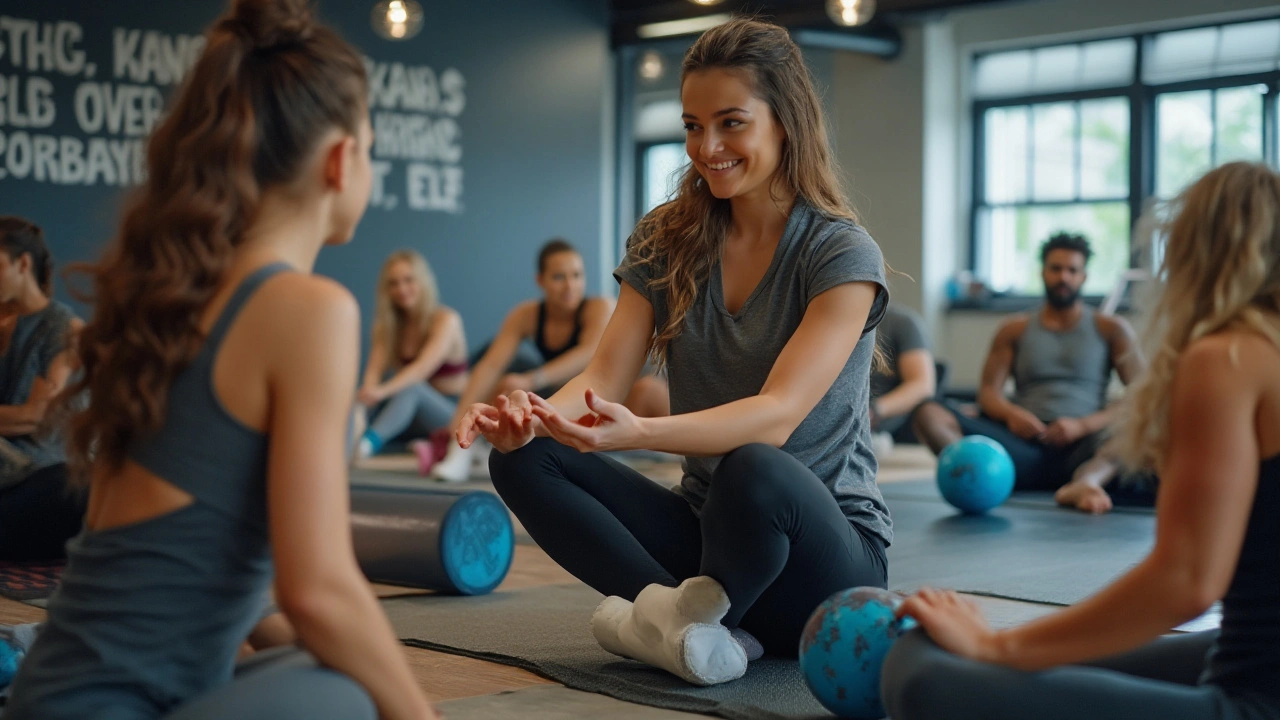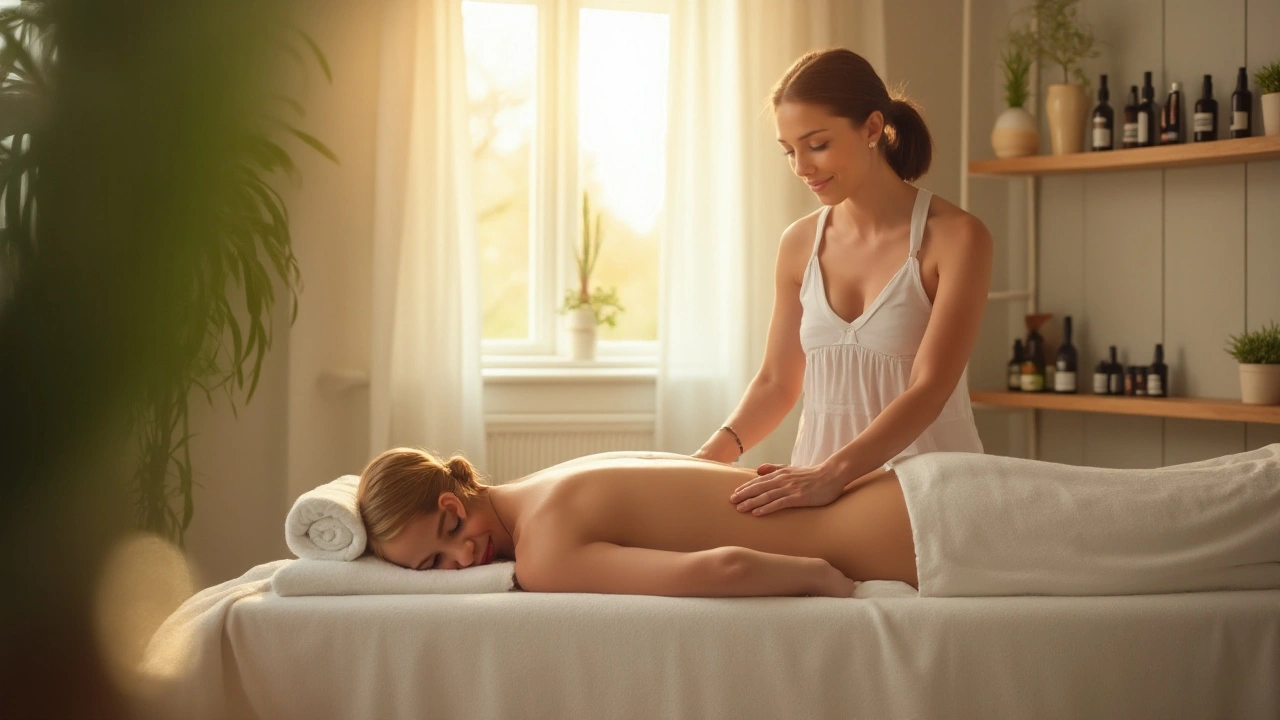Sports massage is more than a luxury; it's a powerful tool for anyone looking to keep their body in peak condition. While often associated with athletes, its benefits extend to anyone dealing with muscle strain and tension.
Stripped of mystique, this therapy combines various techniques designed to ease tightness, improve flexibility, and enhance blood circulation. It's a way to not only heal the body but also sharpen the mind, making it a comprehensive wellness approach.
Practitioners use specific methods tailored to individual needs, ensuring each session targets the right muscle groups effectively. By integrating sports massage into your routine, you can unlock a natural path to pain relief and improved muscle health.
- Understanding Sports Massage
- Techniques and Methods
- Benefits of Sports Massage
- Incorporating Massage in Your Routine
Understanding Sports Massage
At its essence, sports massage is a hands-on therapy designed to alleviate muscle tension and improve circulation. Originating from ancient practices, this technique has evolved into a scientific approach embraced by athletes and fitness enthusiasts alike. The core idea is to facilitate faster recovery, prevent injuries, and enhance physical prowess. But why stop there? It's not just for professionals; anyone dealing with stress or repetitive activities can benefit greatly from it.
The practice involves manipulating soft tissues in the body, targeting muscles, tendons, and fascia. The methods can vary from deep intersecting strokes to brisk tapping. Unlike a traditional massage aimed at relaxation, sports massage zeroes in on problem areas. This focused approach ensures that the body regains its optimal function. Yet, the real magic lies in its ability to boost both mental and physical states. After all, a healthy body nurtures a sharp mind.
There are primarily four types of sports massage techniques: pre-event, post-event, maintenance, and rehabilitation. Each type has its methodologies and timing, designed to support an athlete’s training or recovery cycles. This specificity makes it one of the most effective tailored treatments available. And it's not hard to see why. Imagine a runner gearing up for a marathon; a pre-event massage would stimulate blood flow and enhance muscle flexibility, setting them up for peak performance. Post-event massages, on the other hand, focus on clearing lactates and other metabolic waste by-products, thereby accelerating recovery.
Interestingly, modern studies have begun to scientifically validate what many athletes have instinctively known for years. A research paper highlighted in the "Journal of Sports Medicine" noted substantial decreases in muscle soreness and improved recovery times among athletes undergoing regular sports massage.
"Sports massage does not only foster physical recovery but also serves as a mental refresher," said Dr. Emily Wright, a renowned sports therapist. "The positive effects on an athlete's mind are akin to meditation and can often lead to breakthroughs in performance."
To visualize the effectiveness, consider this: during a recent survey, 80% of professional athletes reported improved performance and faster healing after routine sessions. This statistic underlines that incorporating massage therapy significantly impacts athletic outcomes. However, success hinges on finding a trained therapist who understands the nuances of muscle anatomy and sports-specific tension points.
In summary, sports massage isn't a mere luxury; it's an essential component of a comprehensive athletic training program. By understanding its principles and integrating the practice into your routine, you pave the way for enhanced physical health and sustained mental sharpness. And while it might start as a technique for easing sore muscles, it often evolves into a cornerstone for maintaining lifetime fitness.

Techniques and Methods
The foundation of a successful sports massage lies in the application of precise techniques and methods that target specific muscle groups. These techniques are not only designed to relieve muscle tension but also to improve range of motion and accelerate the body's natural recovery process. One widely-used technique is effleurage, a gentle stroking movement that warms up the muscles, enhancing blood flow and preparing them for deeper work. It's a soothing start that sets the tone for a more intense session.
Another critical technique is petrissage, which involves kneading the muscles to release knots and tension. This method stimulates not just the muscles but also the surrounding tissues, promoting enhanced blood and lymphatic circulation. Petrissage can be particularly beneficial for athletes who experience frequent soreness after intense training sessions. Additionally, friction techniques are often employed in therapy. They involve short, brisk movements across a muscle’s fibers, which can break down adhesions and help in better muscle function.
Sports massage also uses tapotement, a percussive technique that involves rhythmic tapping or pounding, stimulating deeper tissues and enhancing muscle responsiveness. This technique is invigorating and often used towards the end of a session to re-energize the muscles. Stretching techniques may also be integrated, helping to elongate the muscle fibers and prevent injury. "Massage helps to extend the muscle fibers and improve their elasticity," says Dr. Jane Fields, a noted sports physiotherapist.
In some cases, therapists may employ a combination of these methods in a tailored manner, depending on the athlete's specific needs and goals. They might use cross-fiber friction to target scar tissue or combine deep-tissue methods to penetrate deeper muscle layers for profound tension relief. Here is a comparison to help identify which techniques may be best suited for particular conditions:
| Technique | Best For |
|---|---|
| Effleurage | Warming up muscles, enhancing blood flow |
| Petrissage | Releasing tension, improving circulation |
| Friction | Breaking down adhesions |
| Tapotement | Stimulating deeper tissues |
Ultimately, the key to successful sports massage is understanding how and when to implement these techniques. By doing so, therapists can effectively tailor each session to the individual's needs, promoting healing and enhancing athletic performance.

Benefits of Sports Massage
When it comes to enhancing physical performance and ensuring quicker recovery, sports massage stands out as a pivotal component in the toolkit of many athletes. By delving into its benefits, we can appreciate why it's considered a cornerstone for both professionals and amateurs alike. A key advantage is its ability to significantly reduce muscle tension. When muscles are overworked, they can become tight and knotted, leading to discomfort and potential injuries. Regularly receiving sports massage helps in loosening up these tense muscles, providing immediate relief from pain. This not only aids in relaxing but also prepares the body for subsequent physical challenges.
Another compelling benefit is its role in improving circulation. When skilled hands knead and press muscles, it stimulates blood flow, allowing for better oxygen and nutrient delivery throughout the body. This increase in circulation enhances muscle recovery and contributes to overall health. Additionally, improved circulation aids in the removal of waste products from the muscles, helping to reduce soreness and fatigue. An interesting study conducted by the National Center for Complementary and Integrative Health found that individuals receiving regular massages displayed improved blood flow and decreased soreness compared to those who did not.
Mental health benefits must not be overlooked either. In today’s fast-paced world, stress is an ever-present companion. Engaging in sports massage provides a serene escape; it’s a moment to disconnect and allow the body to reset. This practice is known for reducing stress hormones like cortisol, while encouraging the production of endorphins – the body’s natural mood elevators. This means that not only can massage help heal the body, but it can also lift the spirit.
Moreover, prevention of injuries is another critical advantage that sports massage offers. By improving flexibility and joint mobility, practitioners are less likely to experience strains and strains that can derail training programs. Enhanced flexibility often results in better posture and alignment, reducing the risk of injuries caused by poor form or lack of mobility. A fascinating piece of data from the American Massage Therapy Association suggests that athletes who incorporate massage into their regimen have a 30% lower incidence of injury.
According to Dr. Tina Allen, a renowned sports physiotherapist, "Sports massage is not just a treatment but a preventive measure. It’s about being proactive rather than reactive."Incorporating sports massage into your routine can work wonders not just anatomically but holistically. Often, people find that with these sessions, they gain a deeper awareness of their body – where tension resides and what alleviates it, which further enriches their practice of self-care. For anyone serious about maintaining their muscle health and performance, regular sports massage sessions are invaluable, providing lasting benefits that positively impact life on and off the field.

Incorporating Massage in Your Routine
Adding a sports massage into your weekly routine is a pivotal step towards maintaining peak physical health while effectively managing muscle tension. It's not just for athletes in their rigorous training sessions or those recovering from injuries; everybody can benefit from this therapeutic practice. Integrating massage means acknowledging how regular physical and mental stress can build up if they're not proactively managed. Many find that setting aside just an hour weekly can have a profound impact on their wellbeing.
Imagine setting aside time for relief. It's a commitment akin to a gym session or a yoga class. First, identify your reason for incorporating massage, whether it be injury prevention, recovery enhancement, or stress reduction. Knowing your objective helps in selecting the appropriate technique or reaching out to a therapist who specializes in that area. It's about tailoring each session to your unique needs. Whether through deep tissue massage targeting specific muscles or a gentle Swedish technique for relaxation, it has to resonate with your body’s demands.
For beginners, incorporating massage into your routine doesn’t mean emptying your wallet on frequent spa visits. Self-massage techniques can be effectively learned and are a cost-efficient way to gain some of the benefits. Tools such as foam rollers, massage balls, and percussion devices can help you apply these techniques at home. These tools aim to relieve muscle tension by encouraging better blood flow, thus accelerating muscle recovery. Additionally, focusing on key areas like calves, back, and shoulders using these tools can significantly impact your energy levels and mobility.
It may be beneficial to partner with a professional therapist at times. A skilled massage therapist offers insights into your body’s condition that you might not recognize on your own. They are trained to identify tension spots and work on them with precision. Besides, the human touch offers a unique warmth and compassion that machines can't replicate, helping build trust and confidence in your body’s balance over time. As you spend time with a massage therapist, you begin to learn more about your own anatomy, which facilitates better care practices within your wellness routine.
According to a study published in the Journal of Sports Rehabilitation, incorporating regular sports massage can reduce the incidence of sports injuries by up to 30%. This emphasis on prevention illustrates the value of consistent massage therapy.
For those worn out by intense workouts or day-to-day stress, it can be powerful to meld relaxation techniques with sport-specific massage. Ensuring adequate hydration and good nutrition complement your massage sessions, as they enhance tissue recovery. Reflecting on your post-massage feeling can guide how you tweak other parts of your routine, be it fitness or leisure activities. Lastly, a pro-tip would be to keep a record of how you feel after massages, noting the timing and techniques, which assists both you and your therapist in customizing future sessions. By doing so, you engage in a holistic health journey, where every part of your week contributes to physical and mental rejuvenation.
